Optimizing the Composition Design of Cement-Based Expanded-Polystyrene (EPS) Exterior Wall Based on Thermal Insulation and Flame Retardance
Abstract
:1. Introduction
2. Experimental Program
2.1. Materials and Sample Preparation
2.2. Testing Program
2.2.1. Physical and Mechanical Tests
2.2.2. Thermal Conductivity
2.3. Combustion Tests
2.4. Scanning Electron Microscopy (SEM) Tests
3. Results and Discussion
3.1. Physical and Mechanical Properties
3.2. Thermal Conductivity
3.3. Combustion Behavior
3.4. Microstructure Analysis
3.5. Statistical Analysis
3.6. Cost Analysis
4. Conclusions
Author Contributions
Funding
Institutional Review Board Statement
Data Availability Statement
Conflicts of Interest
References
- Zeng, Q.; Mao, T.; Li, H.; Peng, Y. Thermally Insulating Lightweight Cement-Based Composites Incorporating Glass Beads and Nano-Silica Aerogels for Sustainably Energy-Saving Buildings. Energy Build. 2018, 174, 97–110. [Google Scholar] [CrossRef]
- Akinyemi, B.A.; Ojediran, J.; Olawale, O.; Ayanwola, S. Efficacy of Expanded Polystyrene as Fine Aggregate in Cement Mortars Modified with Latex Paint as an Alternative to Polymer Admixture. J. Mech. Behav. Mater. 2020, 29, 163–168. [Google Scholar] [CrossRef]
- Amran, Y.H.M.; Farzadnia, N.; Abang Ali, A.A. Properties and Applications of Foamed Concrete; a Review. Constr. Build. Mater. 2015, 101, 990–1005. [Google Scholar] [CrossRef]
- Azizian, M.; Tafreshi, S.N.M.; Darabi, N.J. Experimental Evaluation of an Expanded Polystyrene (EPS) Block-Geogrid System to Protect Buried Pipes. Soil Dyn. Earthq. Eng. 2020, 129, 105965. [Google Scholar] [CrossRef]
- Babavalian, A.; Ranjbaran, A.H.; Shahbeyk, S. Uniaxial and Triaxial Failure Strength of Fiber Reinforced EPS Concrete. Constr. Build. Mater. 2020, 247, 118617. [Google Scholar] [CrossRef]
- Bakhshi, M.; Shahbeyk, S. Experimental and Microstructural Study of the Compressive Strength of Concrete Samples Containing Low Volumes of Expanded Polystyrene Beads. Struct. Concr. 2019, 20, 1379–1390. [Google Scholar] [CrossRef]
- Berardi, U.; Naldi, M. The Impact of the Temperature Dependent Thermal Conductivity of Insulating Materials on the Effective Building Envelope Performance. Energy Build. 2017, 144, 262–275. [Google Scholar] [CrossRef]
- Chung, S.-Y.; Abd Elrahman, M.; Stephan, D. Effects of Expanded Polystyrene (EPS) Sizes and Arrangements on the Properties of Lightweight Concrete. Mater. Struct. 2018, 51, 57. [Google Scholar] [CrossRef]
- Fernando, P.L.N.; Jayasinghe, M.T.R.; Jayasinghe, C. Structural Feasibility of Expanded Polystyrene (EPS) Based Lightweight Concrete Sandwich Wall Panels. Constr. Build. Mater. 2017, 139, 45–51. [Google Scholar] [CrossRef]
- Ferrándiz-Mas, V.; Sarabia, L.A.; Ortiz, M.C.; Cheeseman, C.R.; García-Alcocel, E. Design of Bespoke Lightweight Cement Mortars Containing Waste Expanded Polystyrene by Experimental Statistical Methods. Mater. Des. 2016, 89, 901–912. [Google Scholar] [CrossRef]
- Gomes, M.G.; Flores-Colen, I.; da Silva, F.; Pedroso, M. Thermal Conductivity Measurement of Thermal Insulating Mortars with EPS and Silica Aerogel by Steady-State and Transient Methods. Constr. Build. Mater. 2018, 172, 696–705. [Google Scholar] [CrossRef]
- Khatib, J.M.; Herki, B.A.; Elkordi, A. Characteristics of Concrete Containing EPS. In Use of Recycled Plastics in Eco-Efficient Concrete; Elsevier: Amsterdam, The Netherlands, 2019; pp. 137–165. ISBN 978-0-08-102676-2. [Google Scholar]
- Herki, B.A.; Khatib, J.M. Valorisation of Waste Expanded Polystyrene in Concrete Using a Novel Recycling Technique. Eur. J. Environ. Civ. Eng. 2017, 21, 1384–1402. [Google Scholar] [CrossRef]
- Lu, J.; Wang, D.; Jiang, P.; Zhang, S.; Chen, Z.; Bourbigot, S.; Fontaine, G.; Wei, M. Design of Fire Resistant, Sound-Absorbing and Thermal-Insulated Expandable Polystyrene Based Lightweight Particleboard Composites. Constr. Build. Mater. 2021, 305, 124773. [Google Scholar] [CrossRef]
- Liu, N.; Chen, B. Experimental Study of the Influence of EPS Particle Size on the Mechanical Properties of EPS Lightweight Concrete. Constr. Build. Mater. 2014, 68, 227–232. [Google Scholar] [CrossRef]
- Maaroufi, M.; Belarbi, R.; Abahri, K.; Benmahiddine, F. Full Characterization of Hygrothermal, Mechanical and Morphological Properties of a Recycled Expanded Polystyrene-Based Mortar. Constr. Build. Mater. 2021, 301, 124310. [Google Scholar] [CrossRef]
- Wang, Z.; Huang, Z.; Yang, T. Silica Coated Expanded Polystyrene/Cement Composites with Improved Fire Resistance, Smoke Suppression and Mechanical Strength. Mater. Chem. Phys. 2020, 240, 122190. [Google Scholar] [CrossRef]
- Moghaddam Fard, P.; Alkhansari, M.G. Innovative Fire and Water Insulation Foam Using Recycled Plastic Bags and Expanded Polystyrene (EPS). Constr. Build. Mater. 2021, 305, 124785. [Google Scholar] [CrossRef]
- Nikbin, I.M.; Golshekan, M. The Effect of Expanded Polystyrene Synthetic Particles on the Fracture Parameters, Brittleness and Mechanical Properties of Concrete. Theor. Appl. Fract. Mech. 2018, 94, 160–172. [Google Scholar] [CrossRef]
- Novais, R.M.; Senff, L.; Carvalheiras, J.; Lacasta, A.M.; Cantalapiedra, I.R.; Labrincha, J.A. Simple and Effective Route to Tailor the Thermal, Acoustic and Hygrothermal Properties of Cork-Containing Waste Derived Inorganic Polymer Composites. J. Build. Eng. 2021, 42, 102501. [Google Scholar] [CrossRef]
- Yang, W.; Wang, Y.; Liu, J. Optimization of the Thermal Conductivity Test for Building Insulation Materials under Multifactor Impact. Constr. Build. Mater. 2022, 332, 127380. [Google Scholar] [CrossRef]
- Alengaram, U.J. A Comparison of the Thermal Conductivity of Oil Palm Shell Foamed Concrete with Conventional Materials. Mater. Des. 2013, 51, 522–529. [Google Scholar] [CrossRef]
- Zhou, D.; Gao, H.; Liao, H.; Fang, L.; Cheng, F. Enhancing the Performance of Foam Concrete Containing Fly Ash and Steel Slag via a Pressure Foaming Process. J. Clean. Prod. 2021, 329, 129664. [Google Scholar] [CrossRef]
- Rostami, J.; Khandel, O.; Sedighardekani, R.; Sahneh, A.R.; Ghahari, S. Enhanced Workability, Durability, and Thermal Properties of Cement-Based Composites with Aerogel and Paraffin Coated Recycled Aggregates. J. Clean. Prod. 2021, 297, 126518. [Google Scholar] [CrossRef]
- Prasittisopin, L.; Termkhajornkit, P.; Kim, Y.H. Review of Concrete with Expanded Polystyrene (EPS): Performance and Environmental Aspects. J. Clean. Prod. 2022, 366, 132919. [Google Scholar] [CrossRef]
- Reynoso, L.E.; Carrizo Romero, Á.B.; Viegas, G.M.; San Juan, G.A. Characterization of an Alternative Thermal Insulation Material Using Recycled Expanded Polystyrene. Constr. Build. Mater. 2021, 301, 124058. [Google Scholar] [CrossRef]
- Ramli Sulong, N.H.; Mustapa, S.A.S.; Abdul Rashid, M.K. Application of Expanded Polystyrene (EPS) in Buildings and Constructions: A Review. J. Appl. Polym. Sci. 2019, 136, 47529. [Google Scholar] [CrossRef] [Green Version]
- Westgate, P.; Paine, K.; Ball, R.J. Physical and Mechanical Properties of Plasters Incorporating Aerogel Granules and Polypropylene Monofilament Fibres. Constr. Build. Mater. 2018, 158, 472–480. [Google Scholar] [CrossRef] [Green Version]
- Zhou, B.; Yoshioka, H.; Noguchi, T.; Ando, T. Experimental Study of Expanded Polystyrene (EPS) External Thermal Insulation Composite Systems (ETICS) Masonery Façade Reaction-to-Fire Performance. Therm. Sci. Eng. Prog. 2018, 8, 83–92. [Google Scholar] [CrossRef]
- Wyrzykowski, M.; Assmann, A.; Hesse, C.; Lura, P. Microstructure Development and Autogenous Shrinkage of Mortars with C-S-H Seeding and Internal Curing. Cem. Concr. Res. 2020, 129, 105967. [Google Scholar] [CrossRef]


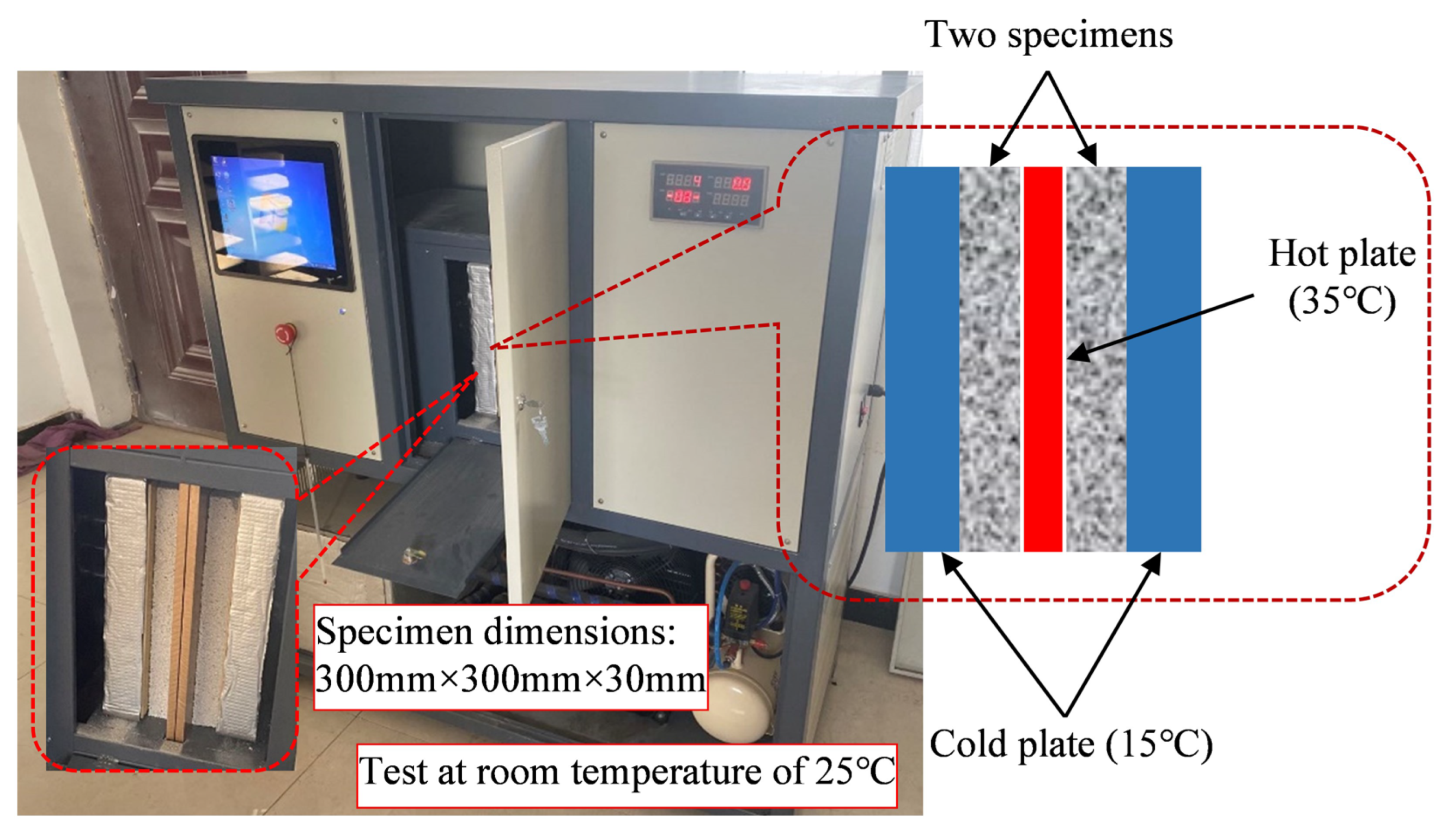
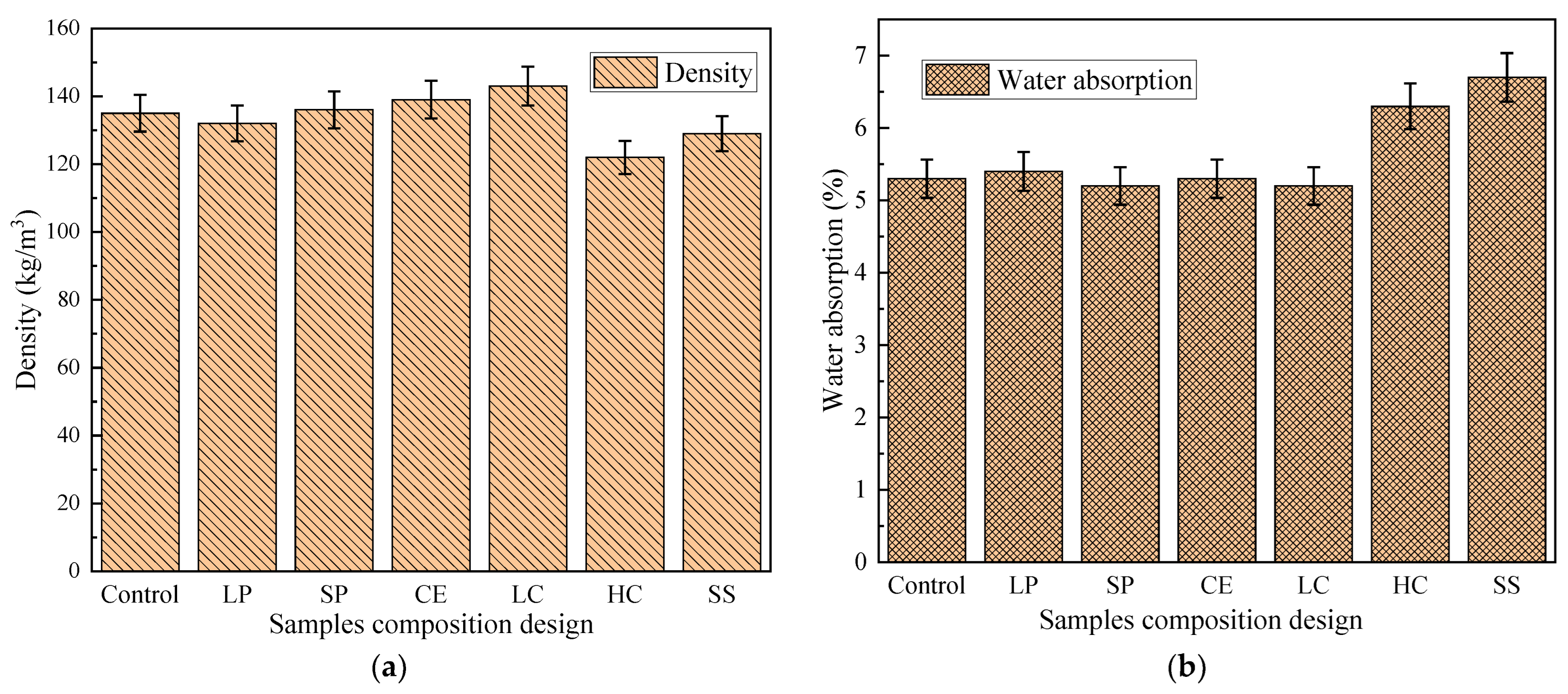
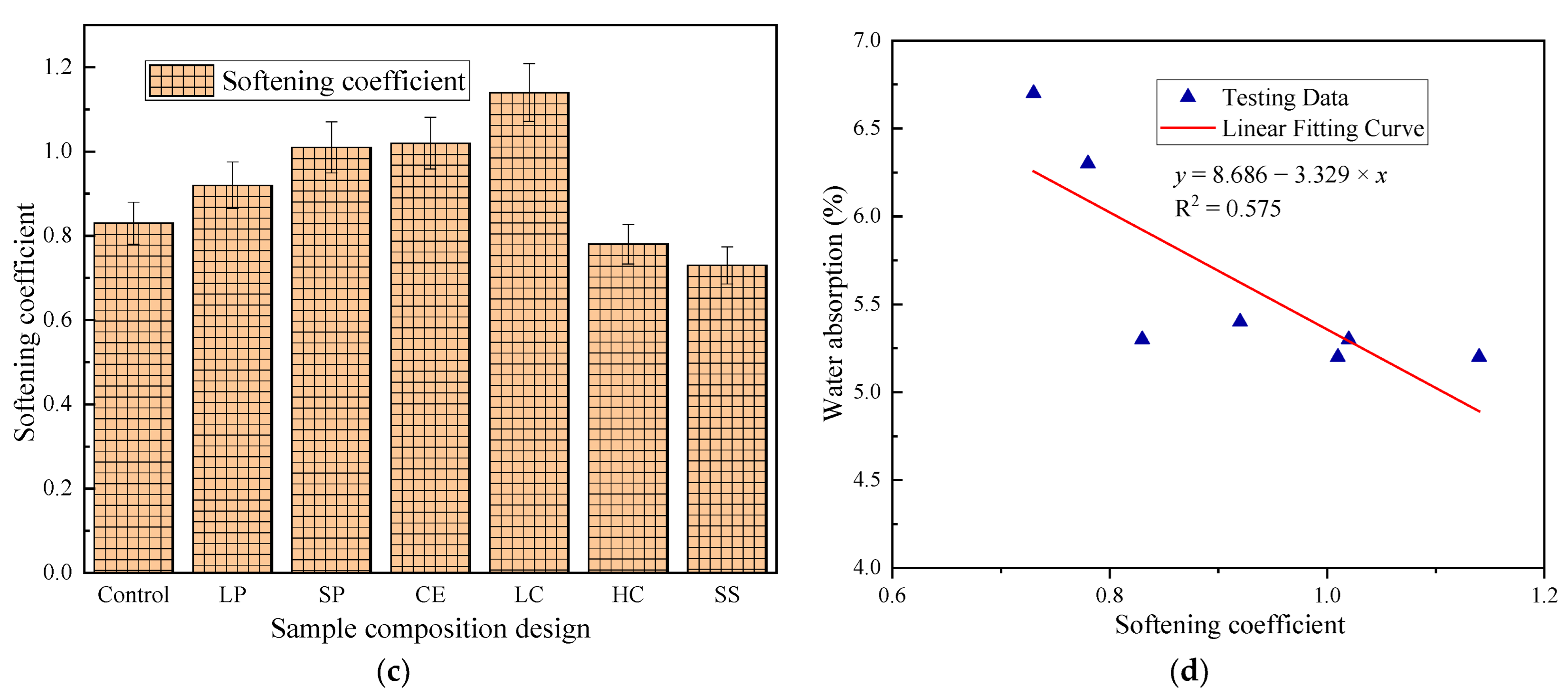
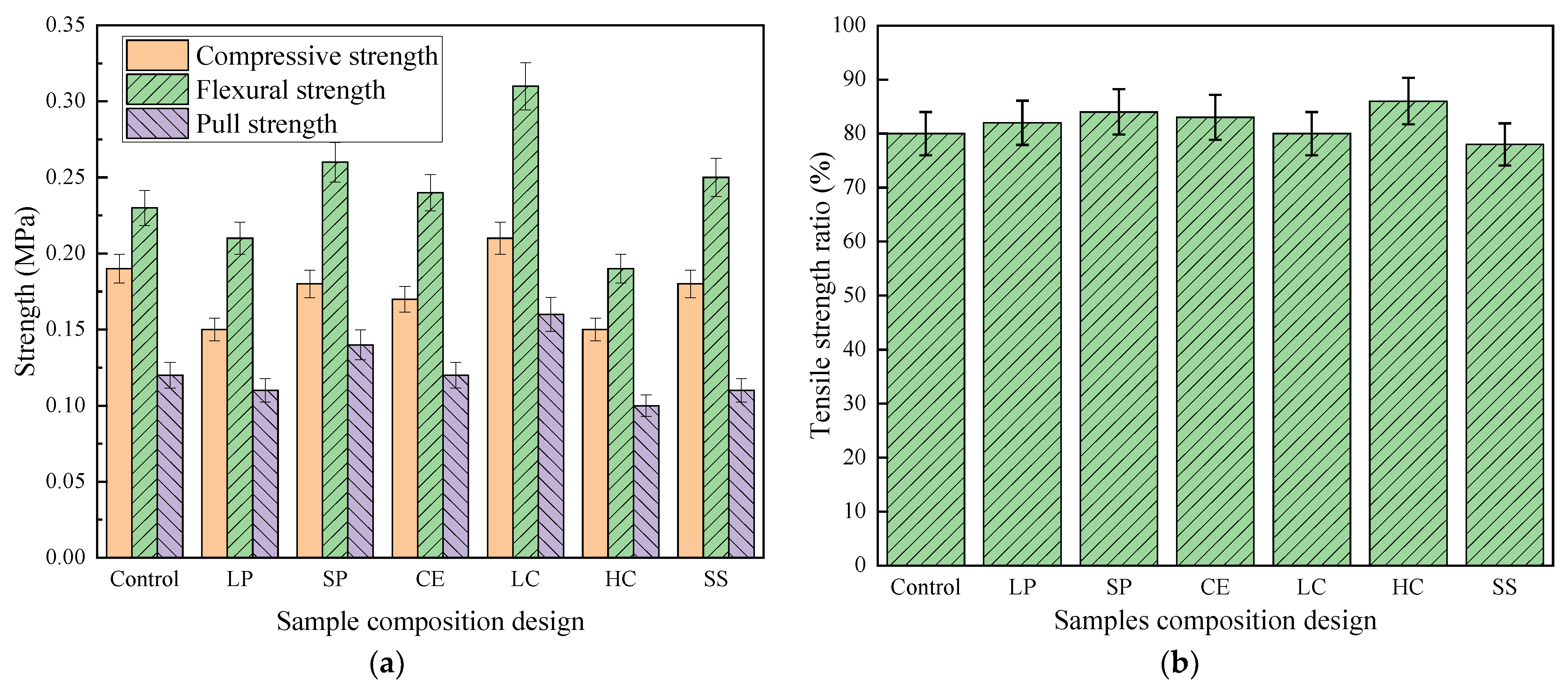

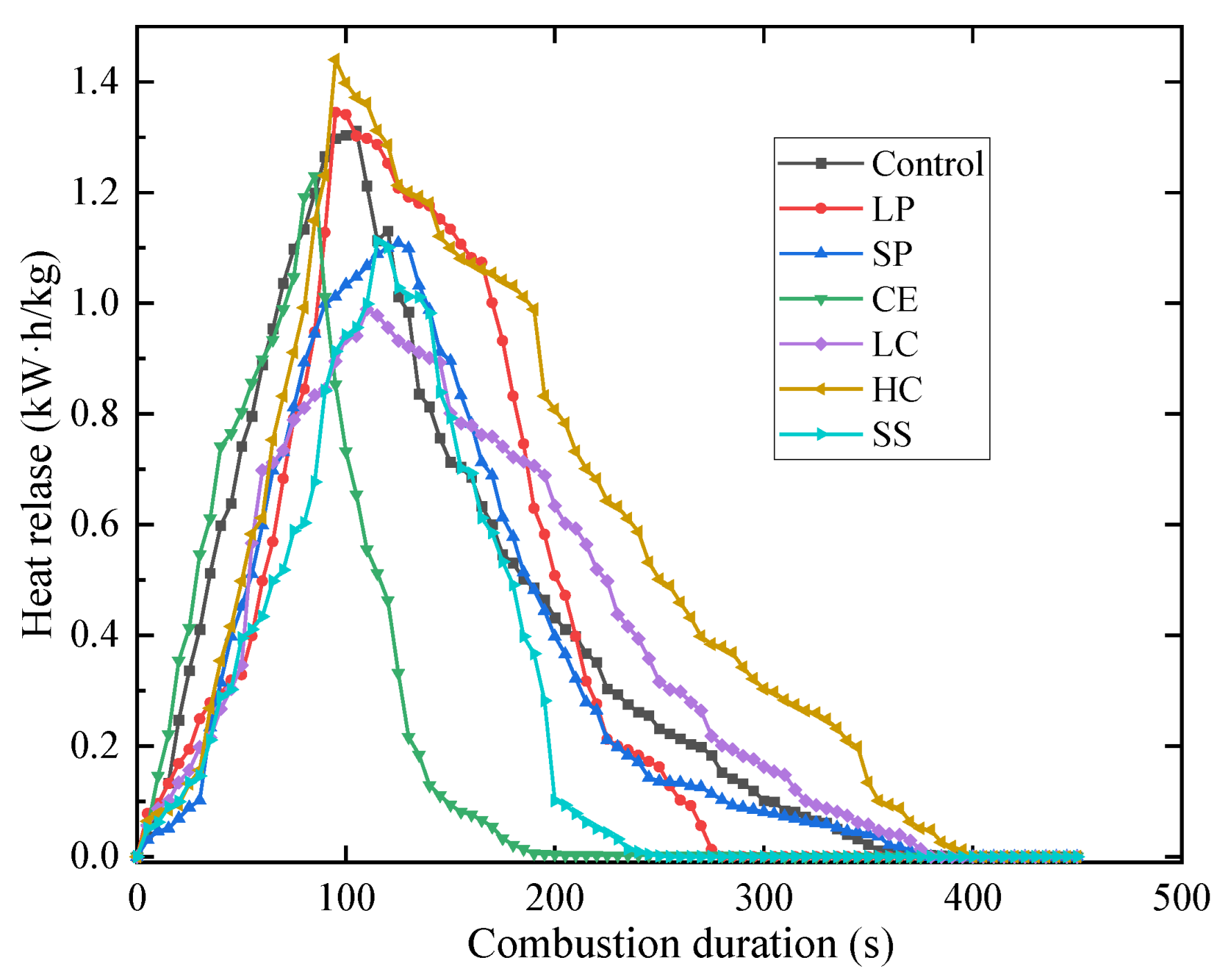
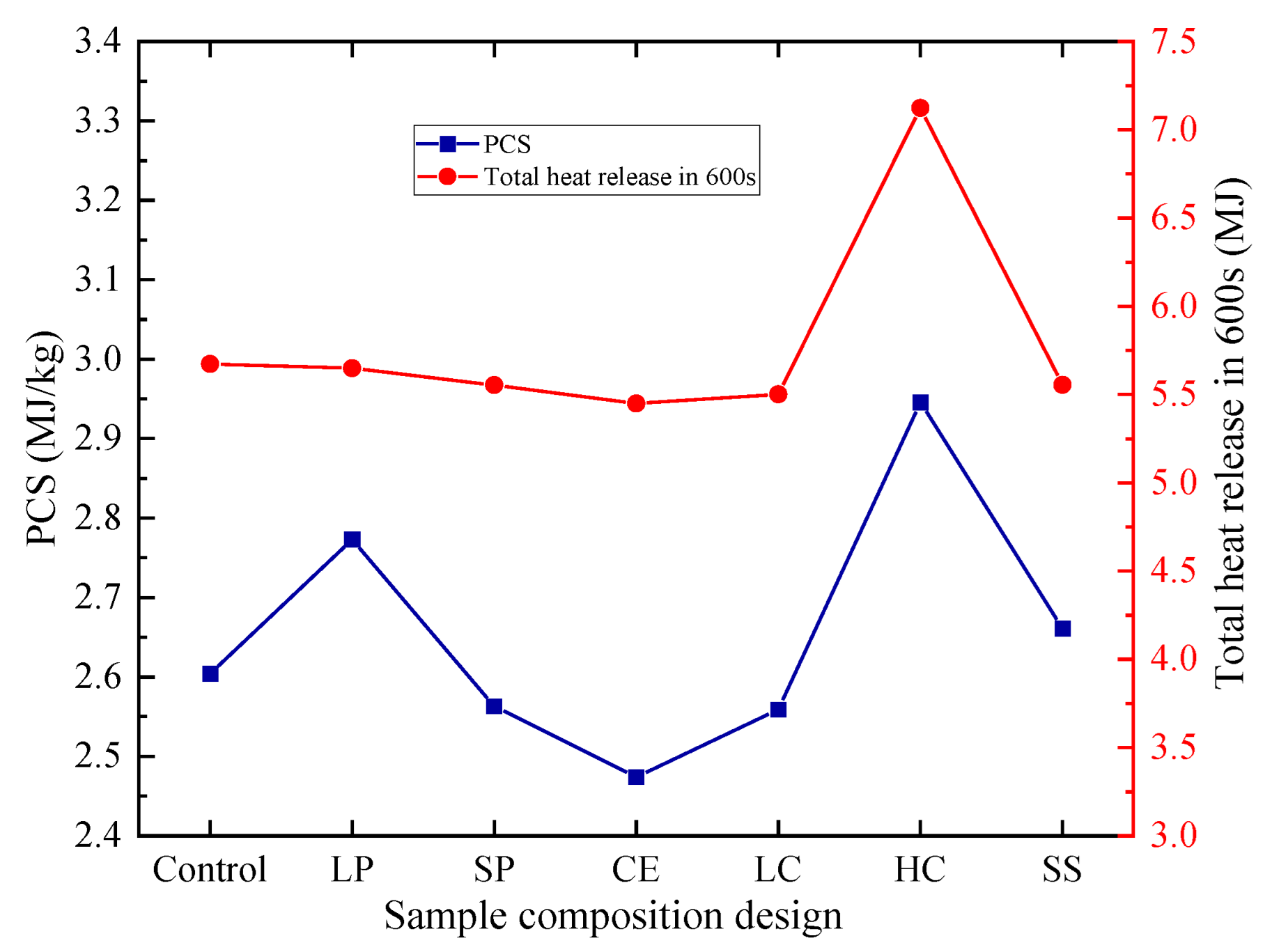
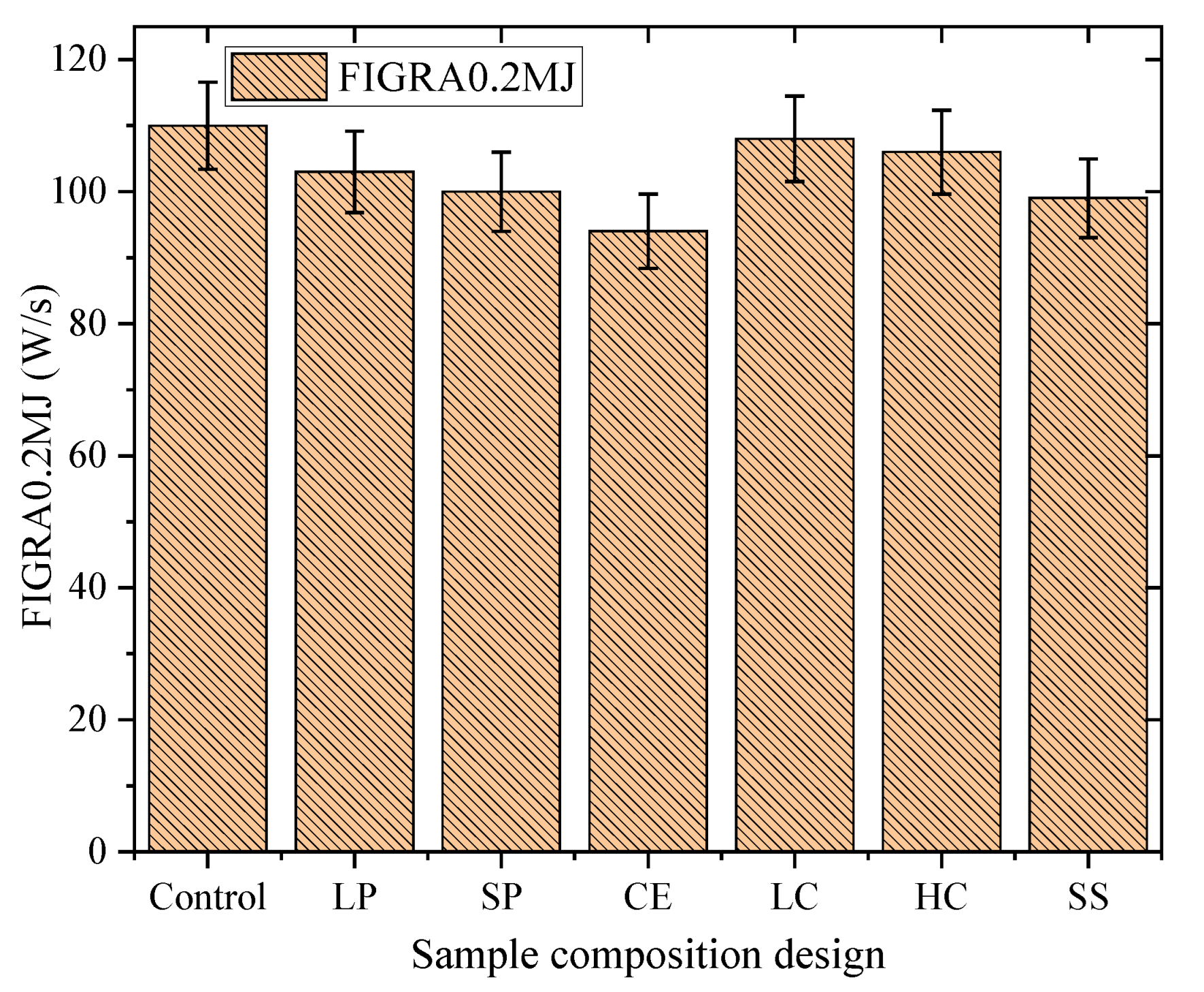
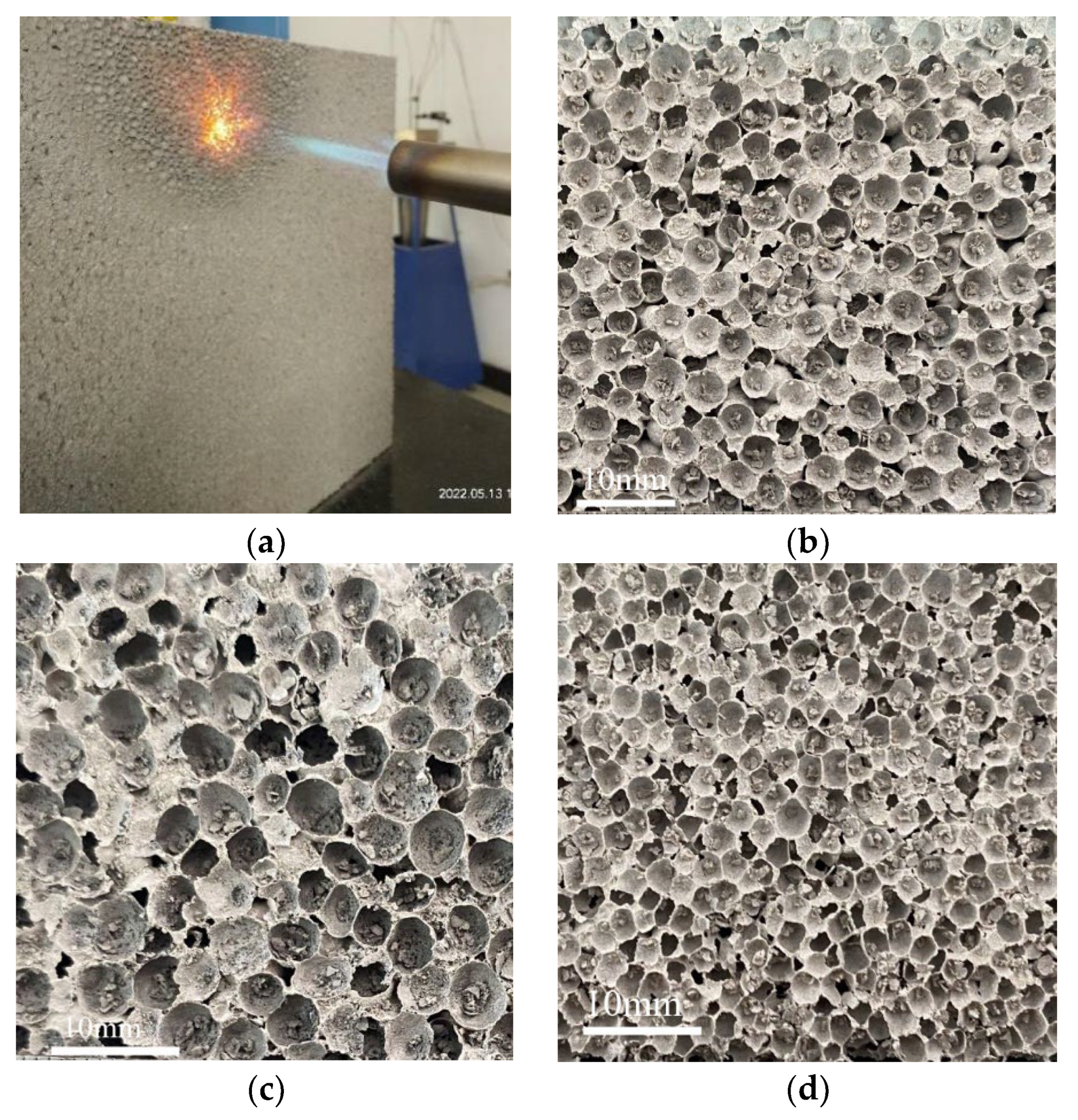

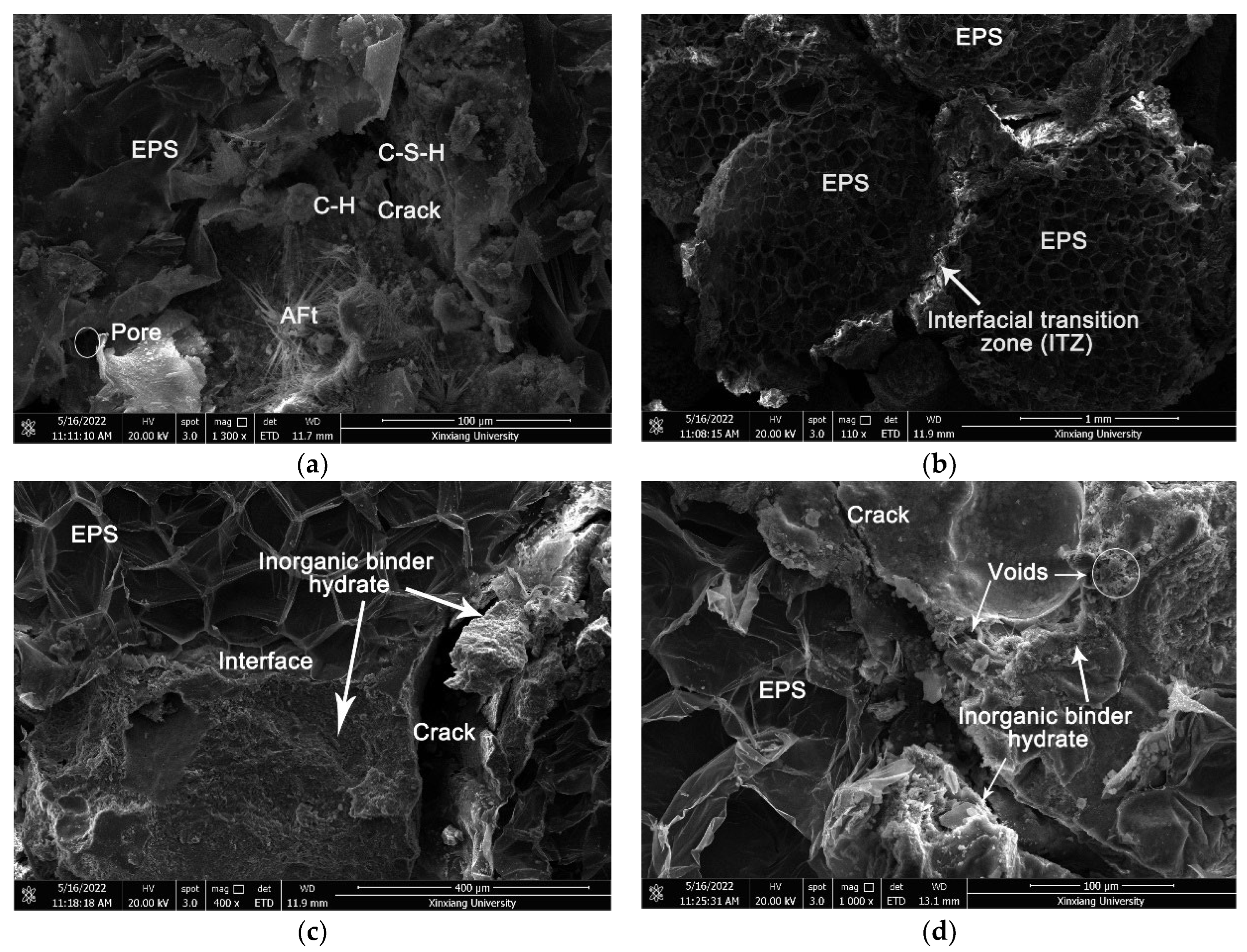
| Mix ID | Particle Size of EPS (mm) | The EPS Dosage (m3/m3) | Cementing Materials (kg/m3) | W/C Ratio |
|---|---|---|---|---|
| Control | 3–4 | 1.7 | 70 | 0.45 |
| Large particle-CEPS (LP) | 4–6 | 1.7 | 70 | 0.45 |
| Small particle-CEPS (SP) | 2–3 | 1.7 | 70 | 0.45 |
| Coated-EPS-CEPS (CE) | 3–4 | 1.7 | 70 | 0.45 |
| Low- EPS content-CEPS (LC) | 3–4 | 1.4 | 80 | 0.45 |
| High- EPS content-CEPS (HC) | 3–4 | 2.0 | 60 | 0.45 |
| Single particle size-EPS-CEPS (SS) | 3 | 1.7 | 70 | 0.45 |
| Physical and Strength Properties | Thermal Conductivity | Flame Retardance | ||||||
|---|---|---|---|---|---|---|---|---|
| Compressive Strength | Flexural Strength | Softening Coefficient | TSR | HRR | THR600s | FIGRA0.2MJ | ||
| EPS content effect | ||||||||
| LC | H | H | M | H | H | H | H | H |
| HC | H | M | M | H | H | H | H | H |
| EPS Particle size effect | ||||||||
| LP | M | N | H | H | M | M | M | M |
| SP | N | M | H | H | M | M | M | M |
| SS | N | N | M | H | M | M | M | M |
| EPS coated effect | ||||||||
| CE | N | N | M | N | M | H | H | H |
| Mix ID | EPS (RMB/m3) | Cementing Materials (RMB/tonne) | Total Price (RMB/m3) |
|---|---|---|---|
| rock wool | - | - | 450 |
| Control | 90 | 1200 | 297 |
| LP | 95 | 1200 | 324.5 |
| SP | 100 | 1200 | 340 |
| CE | 110 | 1200 | 331 |
| LC | 90 | 1200 | 327 |
| HC | 90 | 1200 | 300 |
| SS | 100 | 1200 | 314 |
Publisher’s Note: MDPI stays neutral with regard to jurisdictional claims in published maps and institutional affiliations. |
© 2022 by the authors. Licensee MDPI, Basel, Switzerland. This article is an open access article distributed under the terms and conditions of the Creative Commons Attribution (CC BY) license (https://creativecommons.org/licenses/by/4.0/).
Share and Cite
Shi, J.; Zhao, L.; Zhang, Y.; Han, H.; Zhou, L.; Wang, C. Optimizing the Composition Design of Cement-Based Expanded-Polystyrene (EPS) Exterior Wall Based on Thermal Insulation and Flame Retardance. Polymers 2022, 14, 5229. https://doi.org/10.3390/polym14235229
Shi J, Zhao L, Zhang Y, Han H, Zhou L, Wang C. Optimizing the Composition Design of Cement-Based Expanded-Polystyrene (EPS) Exterior Wall Based on Thermal Insulation and Flame Retardance. Polymers. 2022; 14(23):5229. https://doi.org/10.3390/polym14235229
Chicago/Turabian StyleShi, Jicun, Lei Zhao, Yao Zhang, Hongxing Han, Lihuang Zhou, and Chenxi Wang. 2022. "Optimizing the Composition Design of Cement-Based Expanded-Polystyrene (EPS) Exterior Wall Based on Thermal Insulation and Flame Retardance" Polymers 14, no. 23: 5229. https://doi.org/10.3390/polym14235229
APA StyleShi, J., Zhao, L., Zhang, Y., Han, H., Zhou, L., & Wang, C. (2022). Optimizing the Composition Design of Cement-Based Expanded-Polystyrene (EPS) Exterior Wall Based on Thermal Insulation and Flame Retardance. Polymers, 14(23), 5229. https://doi.org/10.3390/polym14235229









